

The magazine of the photo-essay

Feb 2018 back issue


“A free, really high quality photo-essay magazine. Fabulous!”
Stephen Fry. British actor, writer and film maker
photographs by Salvo Galano
words by Jeff Bridges
In the United States, the wealthiest country on earth, the poor, the hungry and the
homeless must live in the shadows. They are nameless, faceless and literally don’t
have a place to be in the American dream. In a society driven by possessions and
consumption the appearance of people in need provokes and threatens.
Sidewalk Stories give us an opportunity to see the homeless in the brightness of a
makeshift studio, apart from our projections of pity, resentment or fear. Through
Salvo Galano’s camera and compassion the mysterious homeless who frequent the
soup kitchen of the Church of the Holy Apostles in New York City are revealed and
celebrated. Separated from their life circumstances by a simple photographer’s
backdrop their essence, love and beauty are exposed.
The photographs in this book provide a new vision of the homeless. In a departure
from traditional photo essays of the homeless, Salvo doesn’t hunt for the “other” –
pathos, perversion and distance. Instead he discards the distinction between “us and
them”. His photographs move us to experience the humanity of homeless men and

women who exist in a society that unconsciously, but desperately, wants to deny their existence.
As Salvo tells us, the intention behind Sidewalk Stories was to be of service. It is his hope that by “putting a face” on the
homeless statistics, he can help create a context for effective action. As we enter a new millennium the need for that
action is great.
Today, our country must confront the reality that an astonishing number of our people suffer from want. According to the
US Census, 31 million Americans (14 million children) face hunger. Nearly 12% of our population lives in poverty. And best
estimates place the number of homeless at 2 million. No other Western industrialized country has widespread hunger,
poverty and homelessness within its borders.
Across the country, soup kitchens, shelters and food banks try, but cannot meet the need. Furthermore, it is impossible
to expand their capacity to a level that would match the demand for their services. Most people don’t realize that their
appearance coincided with the decline in effective national social programs.
Today these national programs are under-funded and, after years of criticism, have become so punitive that they drive
away the people they were intended to serve. Paradoxically, this inability to serve those who qualify for assistance
strengthens the argument that we should abandon the idea of national programs for the hungry, poor and homeless.
How do we begin to address the crisis? Like Salvo, I believe it requires a new vision. In this vision, providing for America’s
most vulnerable citizens becomes a personal and national priority. But to construct that vision we must first learn how to
see the hungry, poor and homeless as people like ourselves. Within the photographs that comprise Sidewalk Stories, we
are given the cues for this kind of seeing.
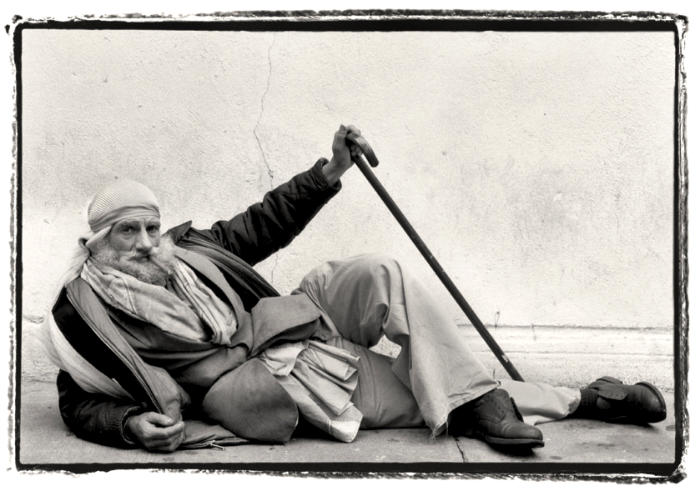
Let me introduce you to my dear friend Ronald Rosario B. The first who “broke the ice,” a sort of guardian angel.
When I first met Ronald, he was sitting on the edge of the sidewalk on the corner of Seventh Avenue and Christopher
Street. His friendly attitude encouraged me to approach him. In that moment began a long and meaningful friendship
that still exists today. With Ronald’s help I was able to learn about a set of rules that the street people respect and
adhere to with conviction as well as to communicate and relate with others that are homeless. Ronald is a man of 57,
homeless for about 40 years. His “permanent job,” as he defines it, is as a “street entertainer,” setting up ad hoc little
street shows, using as a stage the sidewalks of New York, with the only goal to make the passers-by smile and to collect a
few coins to be able to eat and satisfy his only vices - cigars and coffee - in which he indulges almost continuously. His
parents were Sicilian, and one of his desires is to be able one day to visit this land that has always been in his dreams.
Ronald is the only homeless depicted in this book that doesn’t frequent the Soup Kitchen, and for this reason I consider
him the spokesman for the statistics about the homeless community. One man, some numbers. One story, many stories.
A spiritual guide and an ideal “narrator,” thank to whom anyone can understand that being (or becoming) homeless
doesn’t necessarily mean becoming hopeless. That etymologically speaking the word “homeless” simply indicates,
without any derogatory or negative meaning, a human being that has lost his/her home. ...And that the story of a
homeless person, could be the story of everyone. Without exception.
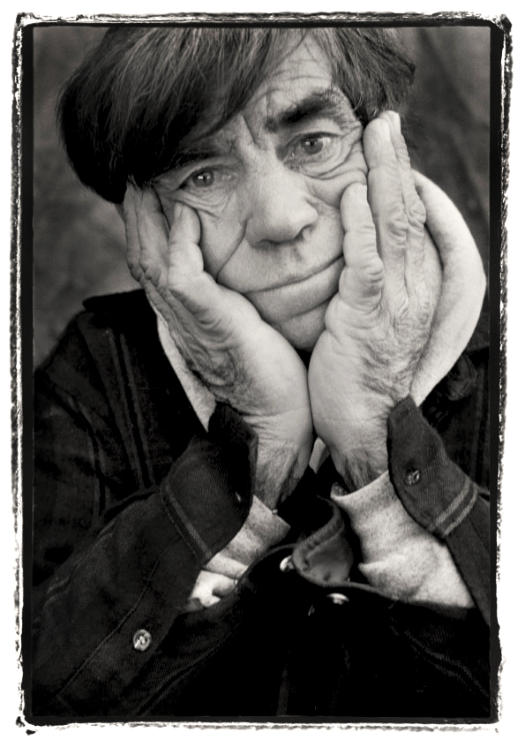
Vince Upon my initial introduction to Vince, I found his hands transfixing. They were the facets of his character I wanted
to capture in his portrait. The hands, big and powerful hands. The hands of a good man. The hands of a man who has
progressed through life with his head held high and who now, at 60, spends his afternoon feeding the pigeons with the
remains of his meal in the park opposite the Soup Kitchen. Proud of his Sicilian origins, Vince dreams of leaving New
York - he maintains this eternal faith, persuaded that the one who is going to help him is his “best friend,” Jesus Christ.
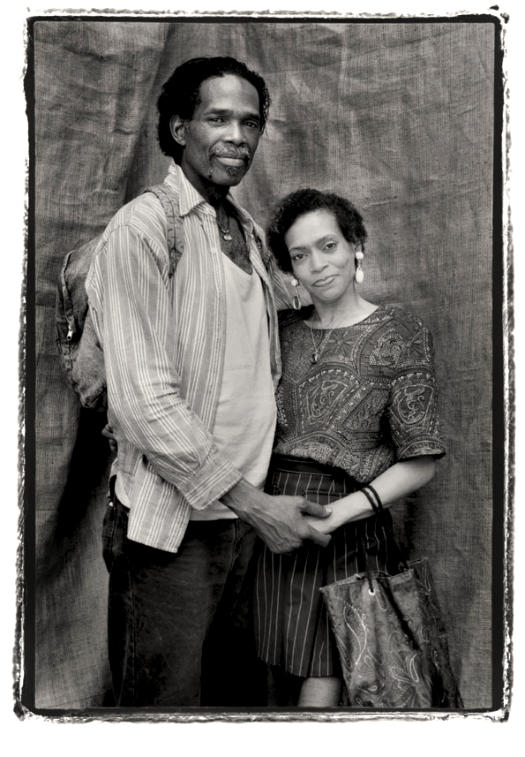
Michael and Goldie Like everyone, Michael and Goldie never expected to become homeless. However... Their story
together begins about 20 years ago in Michigan. It is there that Michael and Goldie got married for the first time. Then
they decided to move to New York. They were living in a squalid basement in Brooklyn and they both had jobs: he as a
maintenance worker in a Manhattan building; she as a clerk in the Chamber of Commerce on Madison Avenue. Their
income was enough to keep the family together, their two children and their elderly mothers. In 1996 Michael’s HIV
progressed from a dormant virus to a virulent one. Soon the intolerable pain forced him to quit his job and subsequently
Goldie quit hers in order to care for him. A few months later, the building in which they were living was condemned to
the grounds of safety by the fire department, and all the residents were evicted. Michael, Goldie their two children and
their grandmothers ended up in the street. It is on the sidewalk that, during the warmer months, they utilize the good
weather to live on the streets, thus enabling them to save the money they earn from their pick-up jobs. In winter, they
move to temporary housing in either a suburb of Queens or Brooklyn where the rent remains affordable for their meager
income. Upon my last meeting with them, in September 1999, their lives were about to change again. Goldie had also
been diagnosed as HIV positive by this time, although through the medication they were able to minimize its impact on
their lives. She was also pregnant with their third child. Most importantly, a few hours later they were going to City Hall to
get married for the second time. With them they had documentation provided by the Coalition For The Homeless proving
their social status. The culmination of this meant they would be entitled to apply for permanent supportive housing,
enabling them to gather their family together. Hopefully, this time, forever.
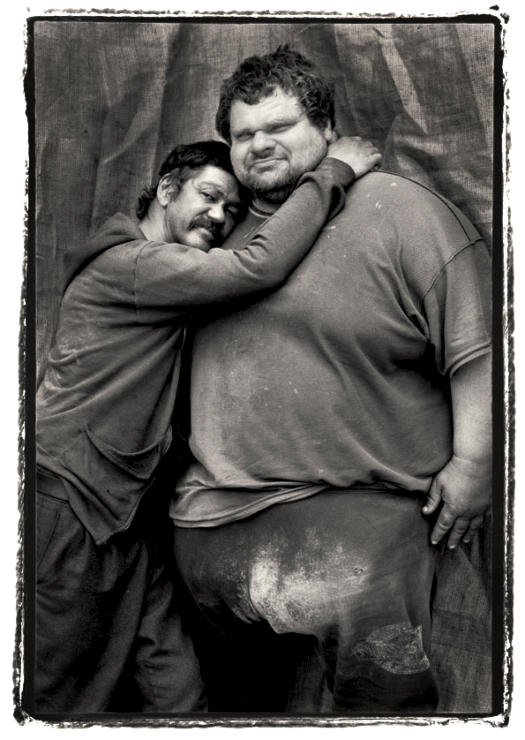
Jose and Steven Inseparable. Where there is Jose there is Steven, Where there is Steven there is Jose. They are the
archetypal little and large pair. Jose, the little one, is nicknamed “Charles Bronson” because of his apparent likeness to
the actor himself. Steven has become a symbol of the Soup Kitchen and is best known as “big man.” He is much loved by
the other guests for his intrinsic generosity. As good friends, Jose and Steven share casual jobs, mostly collecting cans
and recycling old clothes whereupon they split their earnings.
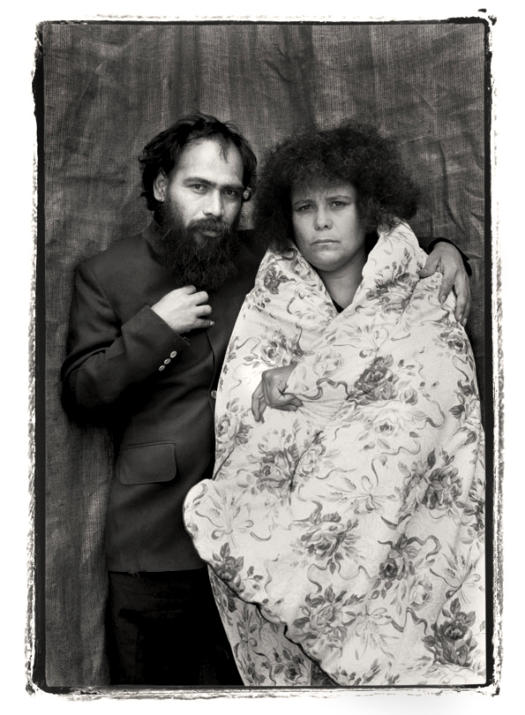
Augustine and Nilda He with the face of a Russian exile just landed on Ellis Island. She with the expression of a psychic
with Balkan blood who reads tarot at Brighton Beach. A couple or not a couple? Because, contrary to the appearance of
the portrait, Augustine and Nilda are just good friends. She’s from a southern state. He’s Mexican, pure bred. Life made
their paths cross at the soup kitchen where a hot meal and a blanket, substantial protections from the cold, made solid
ground for a new friendship. The rest, before and after, you can read in their eyes.
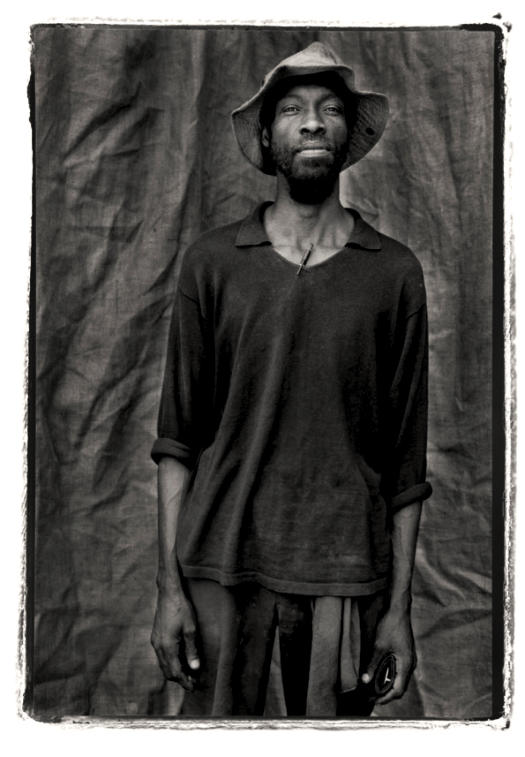
Willie B. At the beginning of the story, he was a policeman. Sometimes in the streets, when something was happening,
people would scream at him: Come here Willie. And Willie was always on the run and ready with his blue policeman’s
uniform, a uniform both too large and too short for that slim and tall body. Then the story went on and became a totally
different one. On the streets nobody was calling him any more. There were other policemen on the sidewalks of New
York. Willie had lost his uniform and was wearing old used clothes. He was surviving now delivering groceries or working
for a moving company. Willie, the former policeman, now became one of those people who policemen regard with
suspicion, sometimes with rage, rarely with pity. He couldn’t know before how the story was going to turnout. Nobody
could know. It went this way, period. Now at 52, Willie lives on the street. The street now houses his new life where,
hidden under a worn-out fisherman’s hat, his proud and silent face floats between the ground and the sky.
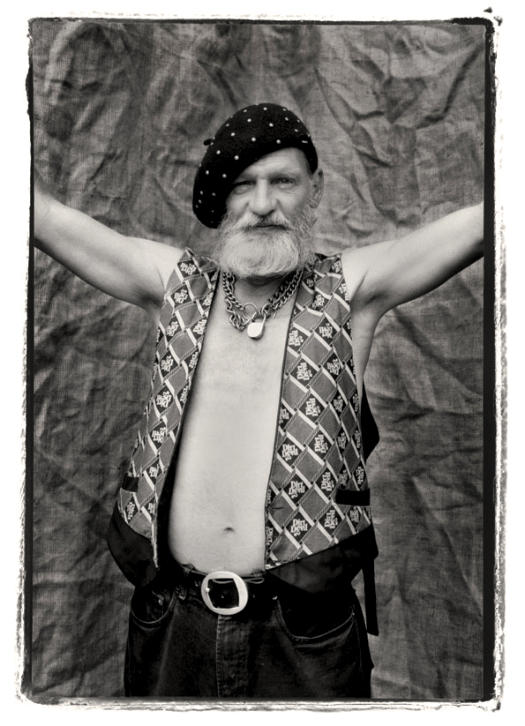
Willie N. Wily used to be an artist. Then, at a certain point, something happened. Nobody knows exactly what. You can
ask him, but you will never get a straight answer. The fact is that he ended up on the street and at about fifty became a
regular at the Soup Kitchen. Now, he’s wrapped in his funny little complaints against the ingratitude of life, wearing his old
hippie clothes that he finds around. He poses in front of the lens with his arms spread out, like a metropolitan Christ. But
his face is serene.
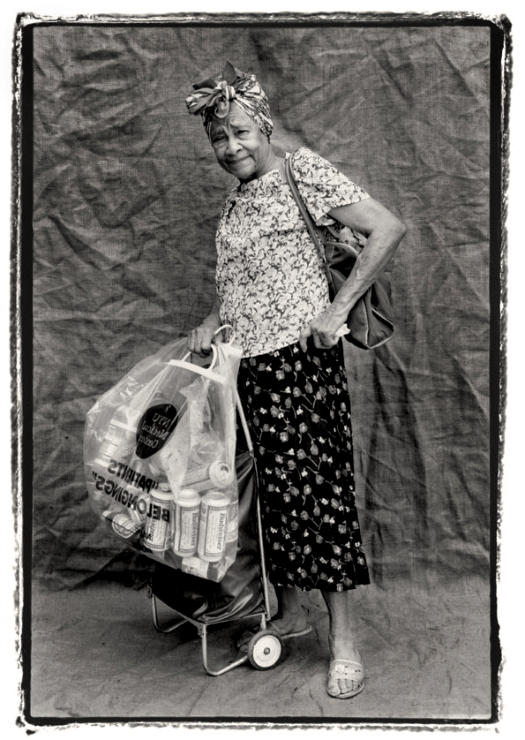
Libby Libby is an awesome grandmother from Cuba. Those who have the pleasure of knowing her are unflinching in
their acceptance of her boundless energy. She is the lady who wonders around New York with her trolley from which she
is inseparable. Libby is a Soup Kitchen regular; she stops by almost every day, eating two meals herself, then getting back
in line to fill up her trolley with extra food and beverages, before starting her long rounds in the city distributing her
collection to those who have less than she has.
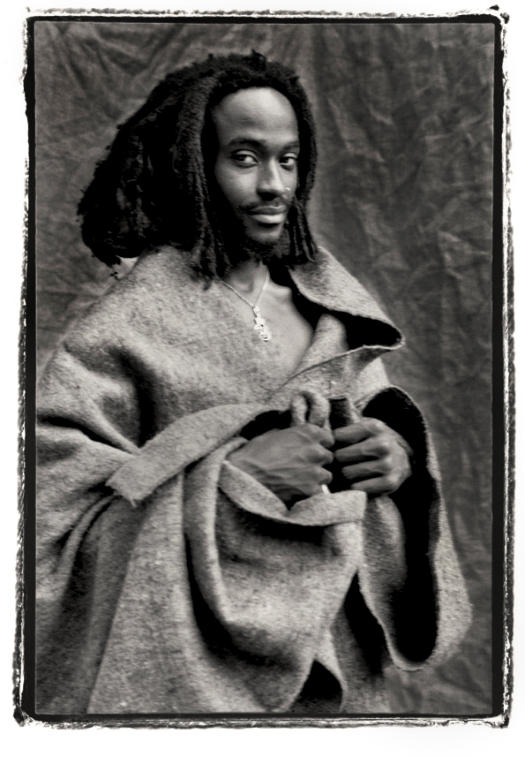
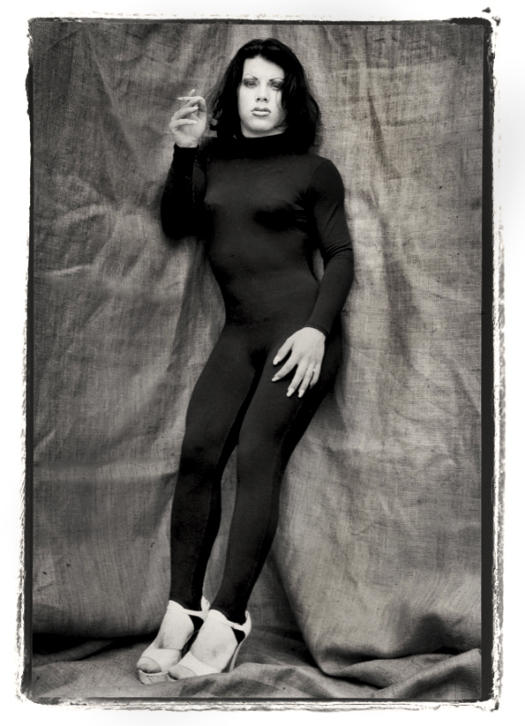
Gary as Christine The fact is that his name is Gary Thomas. He’s 20 years old from Beeville, Texas. On the day of his 15th
birthday, his mother treated Gary and his five siblings to a trip to New York. Gary picked out his best dress and applied
mascara to his eyelashes. Once they were among the skyscrapers of the Big Apple, his mother whispered in his ear that
maybe it was better if he stayed there: “Don’t come back to Texas anymore, Gary, you don’t set a good example for your
brothers and sisters.” Gary didn’t go back. In New York, Gary became Christine. In New York, she developed a history of
drugs. To survive she was forced to prostitute herself. Sometimes she was jailed for petty crimes. In 1998 she was
diagnosed HIV positive. Now, when Christine looks at herself in the mirror, the reflection she sees is her mother, a mother
she no longer loves. She blames her for abandoning her; she accuses her of having never understood. Christine feels her
mother’s responsible for her huge need for love. Now Christine is really confused. From one side she feels like a woman,
from the other she feels like a man. How can she have a clear mind? She can’t even relate to other people because they
look at her and see a man, and as such they want her to act like one. As Christine traces with her finger her profile in
the mirror, she waits for someone to take her hand and say, “I love you.”
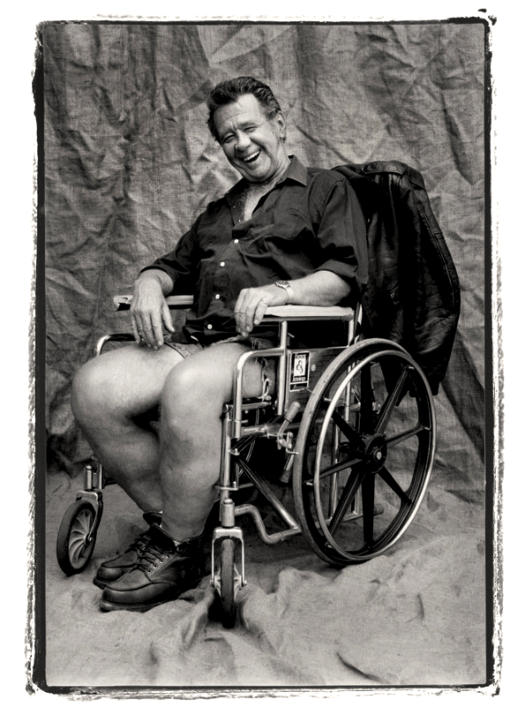
Miles Since he was a kid, everybody told him that he looked like the actor and ex-president of the United States Ronald
Reagan, but that face wasn’t enough to prevent his losing, one after another, his home, his mobility, his serenity.
Everything happened in Florida after a car accident. Miles ended up in a wheelchair. Condemned with no redress. He
thought the insurance company would pay him as soon as possible. But they didn’t.He had to advance the money for
several surgeries, for medication and assistance. To pay, he had to sell one after the other, all his belongings. Now Miles
is the owner of himself and his wheelchair. He’s been waiting for seven years. For how much longer?


Eeyuel Eeyuel was born in Ethiopia 23 years ago. He moved to the States with his family when he was an adolescent and
went to college until he was 19. One day his schoolmates began teasing him about having bugs and soon his life became
unbearable. He was isolated and outcast. It was then that he decided to disappear. To leave his family and live on the
street. To opt out of a constricting life one simply needs a couple of shirts, a couple of pants and a blanket -- the essential
ingredient for a life on the sidewalk. A clipping from a history book that Eeyuel always carries with him portrays Haile
`Selassie`, a turn-of-the-century Ethiopian king who was his spitting image. As soon as Eeyuel looks into the lens, with his
commanding six foot three inches height, one can easily see a career for him as a model. As soon as he stares through
the center of the lens with that piercing look and the blanket wrapped around his body like a regal robe, one can see that
New York, Downtown, Chelsea, the park in front of the Soup Kitchen become Africa, Ethiopia, the beginning of the 20th
century. But this is another story, the one of Eeyuel.









